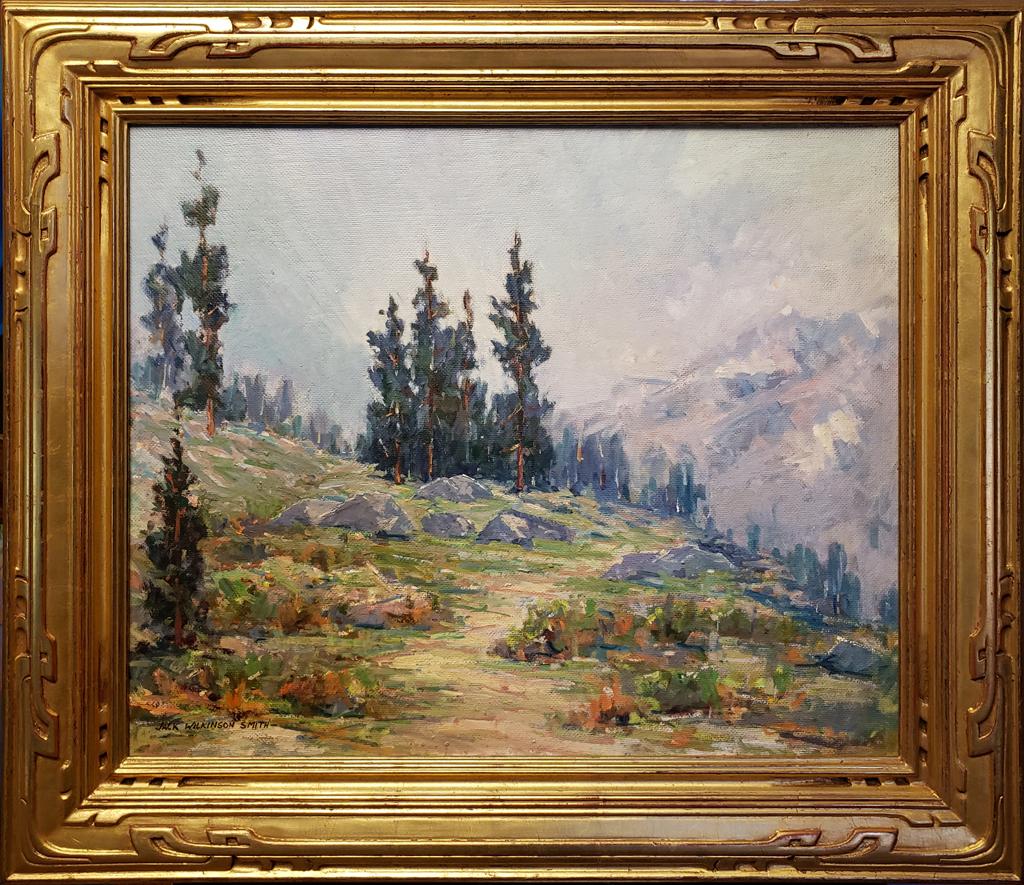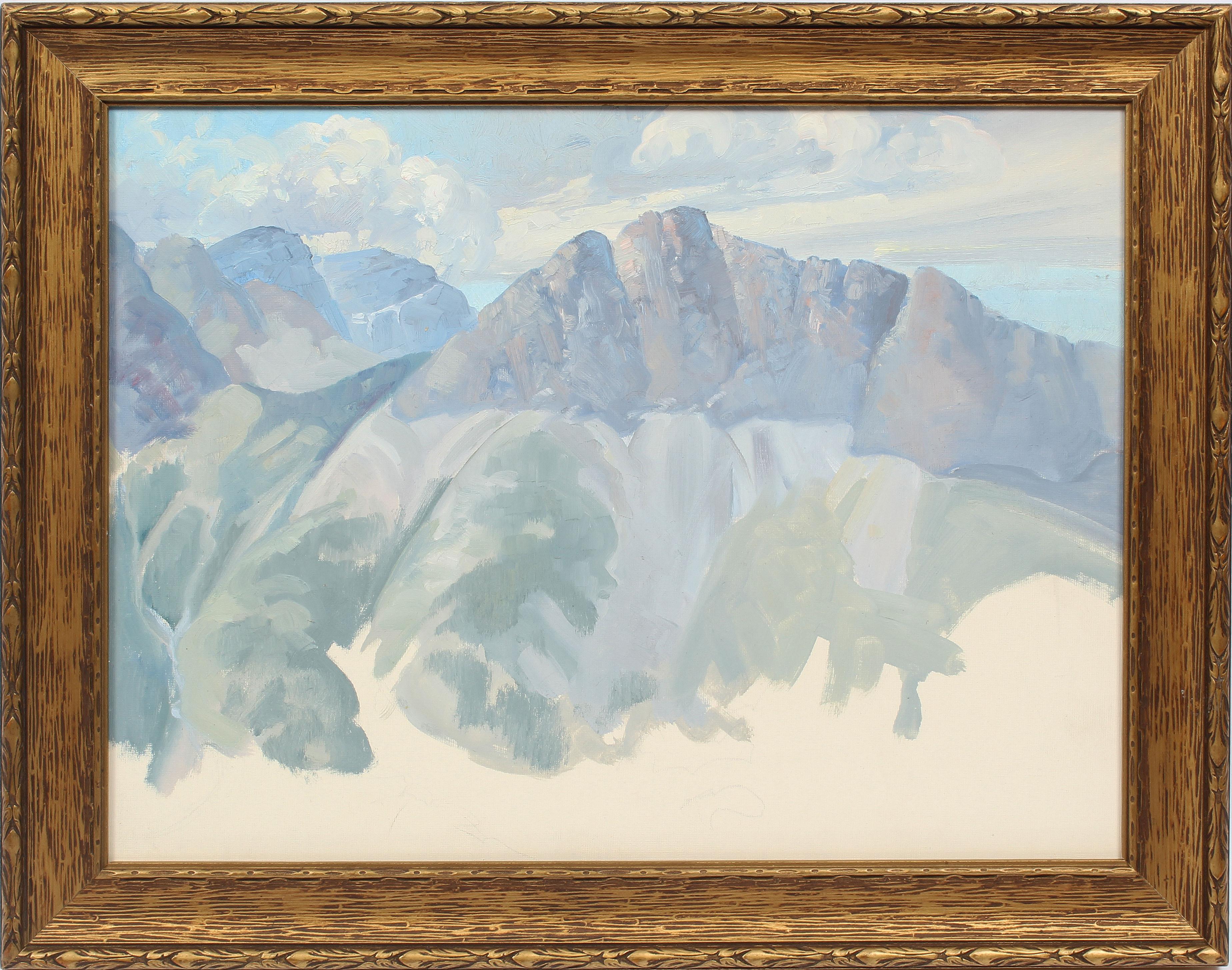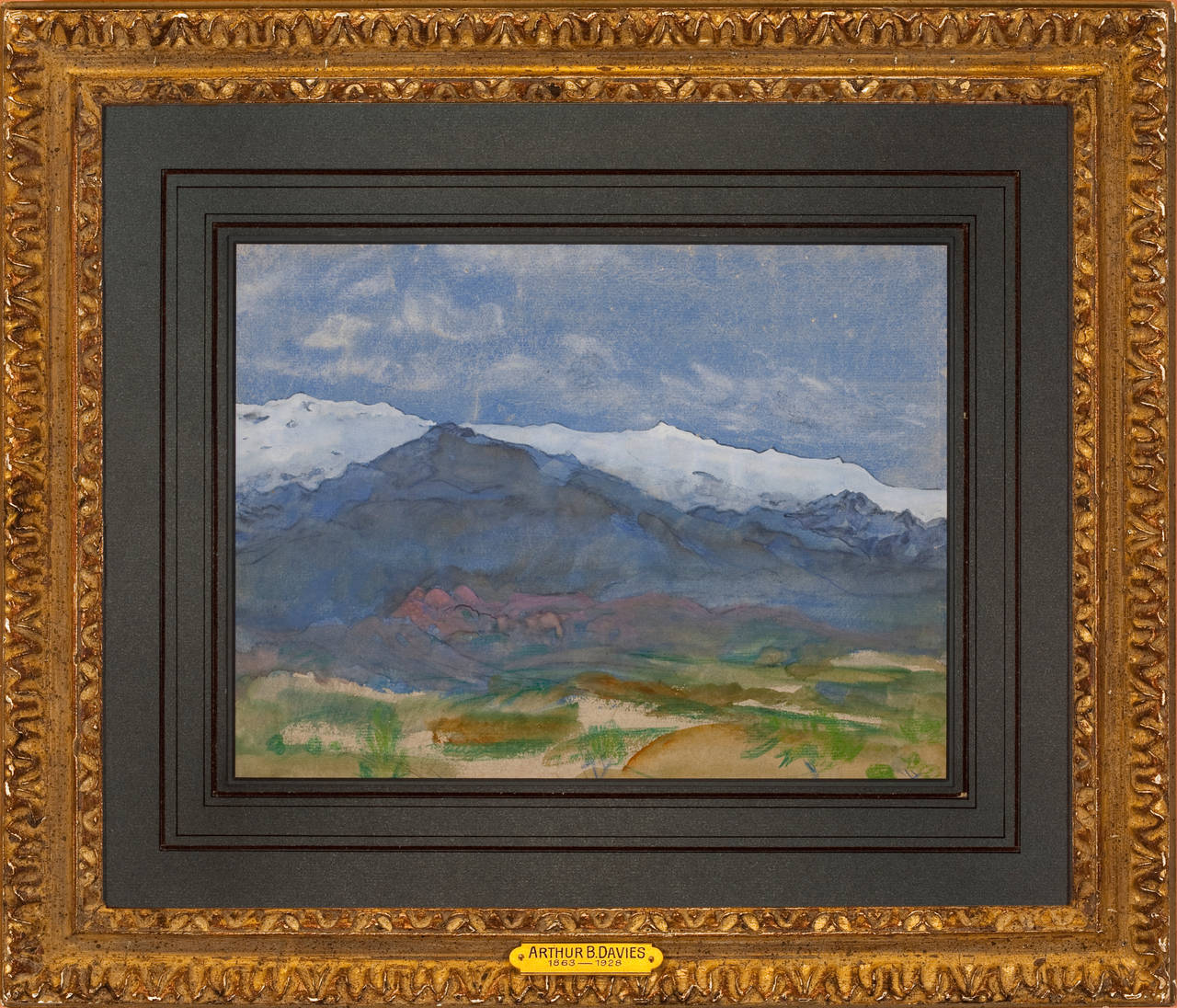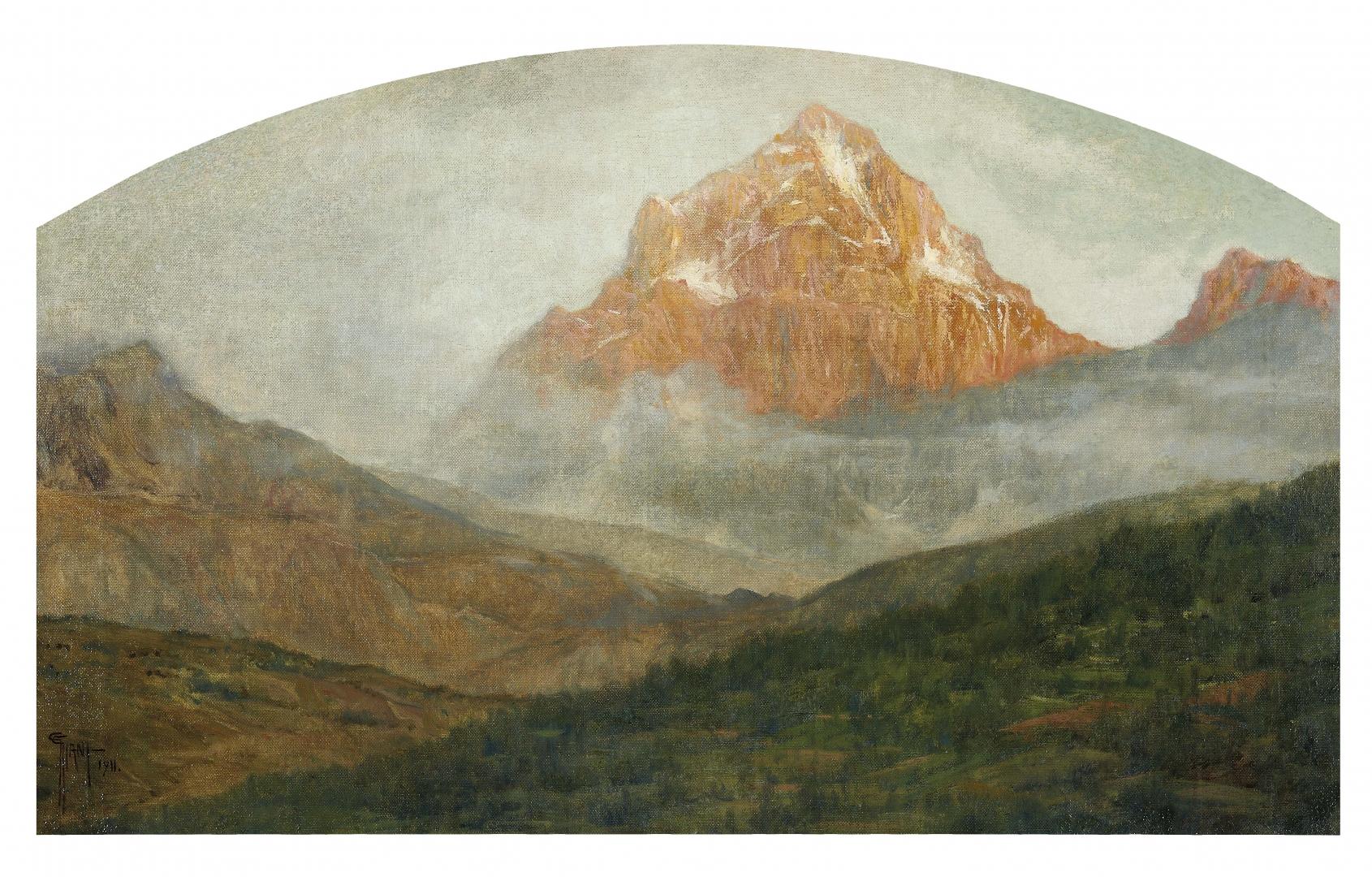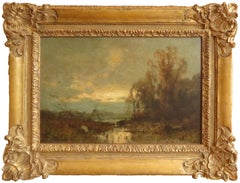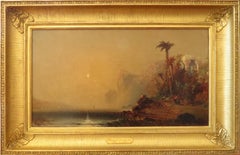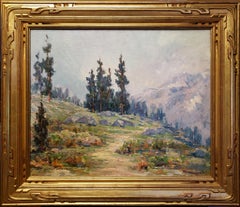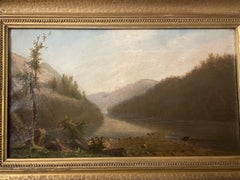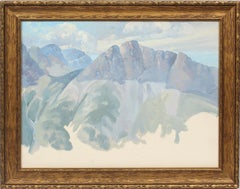Items Similar to "Mountain Labyrinths"
Want more images or videos?
Request additional images or videos from the seller
1 of 5
John F. Carlson"Mountain Labyrinths"1929
1929
$206,250
£156,651.96
€180,984.77
CA$289,066.82
A$323,520.14
CHF 168,852.66
MX$3,945,278.08
NOK 2,161,084.13
SEK 2,045,742.88
DKK 1,350,665.35
Shipping
Retrieving quote...The 1stDibs Promise:
Authenticity Guarantee,
Money-Back Guarantee,
24-Hour Cancellation
About the Item
Ashley John is proud to offer this artwork by:
John Fabian Carlson (1874/75 - 1945)
John F. Carlson was one of the leading American landscape painters in the early 20th Century. He is known for his Tonalist landscape paintings, especially snow scenes. Carlson is a master of capturing the mood of nature by manipulating the lights and shadows in his paintings.
Carlson spent his childhood in Sweden and immigrated to New York at age 10. Later he attended the Buffalo Albright Art School and studied under Lucius Hitchcock. In 1902, Carlson was awarded a scholarship to study at the Art Students League under Frank Vincent DuMond and Birge Harrison. In 1906, Carlson became active in the Arts and Crafts Movement at Woodstock as part of the Byrdcliffe Colony. In 1909, he had his first solo show in New York City. After travelling extensively throughout the United States, Carlson returned to Woodstock where he established the John F. Carlson School of Landscape Painting. Three years later he was elected as a full member of the National Academy of Design.
- Creator:John F. Carlson (1875 - 1947, American)
- Creation Year:1929
- Dimensions:Height: 60 in (152.4 cm)Width: 70 in (177.8 cm)Depth: 4 in (10.16 cm)
- Medium:
- Movement & Style:
- Period:
- Condition:Signed Lower Left.
- Gallery Location:Lambertville, NJ
- Reference Number:1stDibs: LU1573704662
About the Seller
5.0
Vetted Professional Seller
Every seller passes strict standards for authenticity and reliability
1stDibs seller since 2013
13 sales on 1stDibs
- ShippingRetrieving quote...Shipping from: Lambertville, NJ
- Return Policy
Authenticity Guarantee
In the unlikely event there’s an issue with an item’s authenticity, contact us within 1 year for a full refund. DetailsMoney-Back Guarantee
If your item is not as described, is damaged in transit, or does not arrive, contact us within 7 days for a full refund. Details24-Hour Cancellation
You have a 24-hour grace period in which to reconsider your purchase, with no questions asked.Vetted Professional Sellers
Our world-class sellers must adhere to strict standards for service and quality, maintaining the integrity of our listings.Price-Match Guarantee
If you find that a seller listed the same item for a lower price elsewhere, we’ll match it.Trusted Global Delivery
Our best-in-class carrier network provides specialized shipping options worldwide, including custom delivery.More From This Seller
View All"After the Rain"
By John Francis Murphy
Located in Lambertville, NJ
Signed Lower Right
Known for his Tonalist-style landscape paintings, John Francis Murphy was referred to as the "American Corot" because of his similarity to the painting style of Camille Corot (1796-1875), one of the original Barbizon...
Category
Late 19th Century Tonalist Landscape Paintings
Materials
Canvas, Oil
"Exploring the Little Valley"
By William Baxter Closson
Located in Lambertville, NJ
Signed Lower Right
A student at the Lowell Institute in Lowell, Massachusetts, William Closson had an early career as an engraver and worked from 1881 to 1883 in Europe where he e...
Category
20th Century Abstract Impressionist Landscape Paintings
Materials
Board, Oil
"Greek Ruins"
By Franklin D. Briscoe
Located in Lambertville, NJ
Signed Lower Right
Known for his marine, history, and portrait paintings, Franklin Briscoe was born in Baltimore, Maryland and at age four moved with his family to Philadelphia where he later became a student of Edward Moran and where eventually he settled his studio.
Briscoe made extended ocean voyages, including trips to Europe where he saw much painting in galleries, and from these adventures and observations developed his landmark paintings of the ocean and ships in all kinds of weather conditions.
In 1885, he painted an historical mural that was in ten panels, a total of 230 feet long, and 13 feet tall--"The Battle of Gettysburg...
Category
19th Century Hudson River School Landscape Paintings
Materials
Canvas, Oil
"Overhanging Trees"
By Julian Alden Weir
Located in Lambertville, NJ
Ashley John is proud to offer this artwork by:
J Alden Weir (1852 - 1919)
Born in West Point, New York Julian Alden Weir received his first art training from his father, Robert W. Weir, who was a professor of drawing at the United States Military Academy. The younger Weir continued his studies in New York at the National Academy of Design and in Paris at the Ecole des Beaux-Arts where he worked under the important academic teacher Jean-Léon Gérôme beginning in 1873. Traveling to Holland and Spain during his student years, Weir was inspired by the work of Hals and Velasquez. However, the major influence on his early career was the French painter Jules Bastien-Lepage, who was well known for his realistic depictions of Breton peasants in the outdoor landscape.
On his return to New York in the fall of 1877, Weir supported himself by teaching at the Cooper Union Women's Art School and at the Art Students League. He was also active in avant-garde artist organizations that began in the late 1870s, helping to found the Society of American Artists and participating in Tile Club...
Category
Late 19th Century American Impressionist Landscape Paintings
Materials
Canvas, Oil
"Snow Squals, Parmelee Farm"
By Peter Poskas
Located in Lambertville, NJ
Signed Lower Left
Poskas was born in Waterbury, Connecticut, a small industrial city set on the banks of the Naugatuck River. He was interested in art as a child, but on entering ...
Category
20th Century American Realist Landscape Paintings
Materials
Canvas, Oil
"Afternoon Storm"
By Peter Sculthorpe
Located in Lambertville, NJ
Signed LL & on Verso: Signed, Dated, Attributed
Peter Sculthorpe was born in Ontario, Canada, in 1948 of dual US-Canadian citizenship. His talent was evident even as a child and at age 12 he first studied art with his uncle, Gordon Peters, a renowned Canadian painter. Sculthorpe's Father, an insurance executive was transferred from Toronto to Philadelphia in1962 and it was while in high school that he developed rapidly, was recognixed by a local artist - watercolorist Philip Jamison...
Category
21st Century and Contemporary Landscape Paintings
Materials
Linen, Oil
You May Also Like
Mountain Landscape - Sierra Nevada, c. 1927
By Jack Wilkinson Smith
Located in Pasadena, CA
Provenance
Consigned to the gallery by private collectors
Description
Jack Wilkinson Smith was a New York-based illustrator before moving out West around 1906 seeking the mythical W...
Category
1920s Impressionist Landscape Paintings
Materials
Oil, Panel
Late 19th Century Tonalist Rocky Mountain High Camp Landscape
Located in Soquel, CA
Late 19th Century Tonalist Rocky Mountain High Camp Landscape
Wonderful 19th Century tonalist painting of Flat Top Mountain in the Rocky Mountains by unknown artist (American, late ...
Category
Early 1900s Tonalist Landscape Paintings
Materials
Canvas, Oil
Tonalist Hills and River
Located in Hillsborough, NC
The technique of American Tonalism is evident in this oil painting on canvas from the early 20th century/late 19th century. Hues of muted greys cre...
Category
20th Century Tonalist Landscape Paintings
Materials
Canvas, Oil
American Impressionist Panoramic Mountain Sketch Landscape & Sky Study Painting
By George Browne
Located in Buffalo, NY
Antique American oil painting of panoramic mountain range by George Browne (1918 - 1958). Oil on board, circa 1940. Signed on verso. Displayed in a period giltwood frame. Image, 1...
Category
1940s Impressionist Landscape Paintings
Materials
Canvas, Oil
"Mountain Landscape"
By Arthur B. Davies
Located in Lambertville, NJ
Jim’s of Lambertville is proud to offer this artwork:
Framed watercolor of a mountain landscape.
Arthur B. Davies (1862-1928)
Born in Utica, New...
Category
20th Century Tonalist Landscape Drawings and Watercolors
Materials
Watercolor
Mountain Landscape - Oil on Canvas by G. Giani - 1911
By Giovanni Giani
Located in Roma, IT
Original Oil on Canvas by Giovanni Giani, realized by the artist in 1911.
Signed and date lower left "G. Giani 1911".
Very good conditions.
Category
1910s Naturalistic Figurative Paintings
Materials
Canvas, Oil
More Ways To Browse
Antique Hitchcock
John F Carlson
Carlson Antique
John Fabian Carlson
Austin Sculpture 1987
Cabin Impressionist
Carmel Bay Paintings
Chicago Skyline Painting
Eiffel Oil Painting
George Krevsky Gallery
Hawthorne Fine Art
Mid Century Woodland Oil Painting
Oil Paint Surfer
Robert Kingston
Scottish Isles Paintings
Tom Nicholas
Vintage Gulf Oil
Walter A Clark
